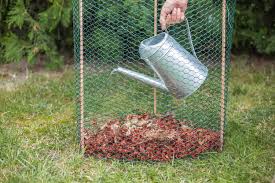18 August 2016, Written by Barbara Pleasant
Hot composting is an efficient and active process that transforms organic waste into nutrient-rich compost. It’s a great method to produce superior compost in a short period—far better than the slow process of cold composting. While cold composting requires little attention, hot composting involves managing the conditions of the pile to ensure quick decomposition. This results in rich, crumbly compost that will improve your garden soil and promote plant health. Plus, it’s a rewarding and physically engaging process. Late summer is an excellent time to start composting since warm temperatures help speed up decomposition.
Why Choose Hot Composting?
Hot composting offers several advantages over cold composting:
- Faster decomposition: Hot composting can be completed in as little as three weeks.
- Fewer weed seeds: The high temperatures destroy weed seeds, resulting in cleaner compost.
- Richer nutrients: The managed conditions create compost that is richer in plant-promoting substances.
- Great workout: Turning the compost regularly provides a full-body workout, which is a fun alternative to going to the gym.

Hot Composting Basics
To start a hot compost pile, you want a good mix of materials, which includes both “green” high-nitrogen items and “brown” high-carbon materials. Instead of layering these materials, mix them together to create an ideal environment for bacteria and microbes to break them down quickly. Successful hot composting usually involves a blend of half-rotted weeds, kitchen scraps, grass clippings, and other organic matter. Adding shredded leaves or old mulch can further enrich the mix.
Don’t worry if your pile isn’t perfectly mixed on day one; the pile will be turned regularly to help achieve even decomposition. Start with a sizable pile—ideally, at least 3 feet (1 meter) tall and wide. Larger piles hold heat better and produce compost more efficiently.

Temperature Monitoring and Aeration
A simple way to monitor the temperature of your compost is by inserting a metal stake into the center of the pile. This will not only allow you to feel the heat but also help aerate the pile as you wiggle the stake. The goal is to maintain temperatures between 130-140°F (55-63°C), which is the optimal range for microbial activity. If you can’t hold your fist in the pile for more than a few seconds, you know the pile is hot enough. You may also notice steam rising from the compost as it heats up.
Turning the Pile
After assembling your compost heap, let it sit for four days. This gives the pile time to settle and moisture to distribute evenly. After this initial period, you can start turning the pile every 2-3 days for two weeks. Each time you turn it, you should feel and see the heat (steam or warmth in the pile), signaling that the compost is decomposing well.

Curing the Compost
After about two weeks of turning, the pile will begin to cool down. At this stage, active decomposition has slowed, but the compost still needs time to cure. This is where it reaches its final, stable state. Allow the compost to cure for at least a month, either by covering the pile or storing it in containers like buckets or flowerpots. During this time, the microbes in the compost stabilize, improving the texture and making it dark, crumbly, and rich in nutrients. A well-cured compost is easy to handle, pleasant to smell, and perfect for enriching your garden soil.
Conclusion
Hot composting is a rewarding, efficient method to create nutrient-rich compost quickly. With just a little effort and patience, you can transform organic waste into a valuable resource for your garden. Plus, it’s a great way to get outdoors and stay active. Whether you’re a seasoned gardener or just starting out, hot composting can be a fun and productive addition to your gardening routine. Happy composting!
